Lose 10 Pounds a Month With These Moderate Steps

Is it possible to lose 10 pounds in four weeks? Absolutely, but those who already have a significant amount of weight to lose will find it easier to hit that goal than those who don't. With a few lifestyle, dietary, and fitness changes, not only will you lose weight, but the process may also positively impact your health and happiness. "Don't look to dietary supplements for help in burning calories or losing weight. Products that claim to speed up metabolism usually don't live up to their claims. Some may cause bad side effects," says the Mayo Clinic. Here's how to lose 10 pounds a month by making small changes that yield big results.
Get Moving
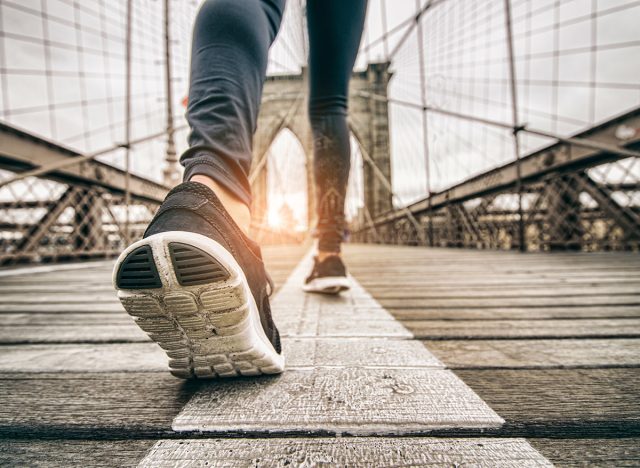
Exercise will not only help you lose weight, but it will also positively impact your health and mental state. "Aim to exercise most days of the week," says the Mayo Clinic. "For even more health benefits, strive for 300 minutes a week or more of moderate aerobic activity or 150 minutes of vigorous activity. Exercising this much may help with weight loss or keeping off lost weight. But even small amounts of physical activity can be helpful."
Cut Down on Alcohol

Consider cutting down on alcohol or abstaining completely while trying to lose weight. "Think about food as fuel for your body, and then look at the places where you don't really need extra calories," Kayla Kopp, RD, LD, tells the Cleveland Clinic. "Ask yourself if you really need that glass of wine every night, or try to cut back on sodas and other sweet drinks."
Drink More Water

"Studies have shown that when people drink water before they eat, they eat less during a meal," Susan Albers, PsyD, tells the Cleveland Clinic. "Being fully hydrated helps with digestion, nutrient absorption, and regulating your appetite hormones, as well as reduces inflammation. All of these are key to being able to hear your hunger and eat in a mindful way."
Do Strength Exercises
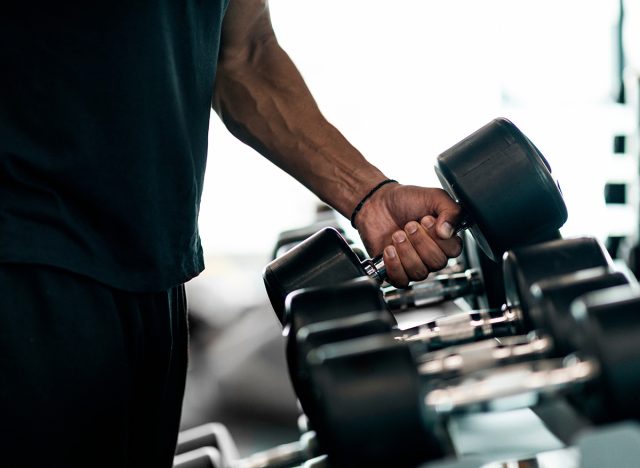
Strength training doesn't have to be overwhelming—simple resistance training or dumbbell exercises can make a big difference. "Adding resistance training and aerobic exercise to a weight-loss program helps prevent the loss of bone and muscle," says the Mayo Clinic. "Do strength training exercises for all major muscle groups at least two times a week. One set of each exercise is enough for health and fitness benefits. Use a weight or resistance level heavy enough to tire your muscles after about 12 to 15 repetitions."
Go Hiking

Weight loss is not sustainable if it makes you miserable. Hiking outside is a fun way to work out (especially if you're with friends or family), and if you're walking on an incline, you burn more calories. Fresh air is good for you!
Avoid Sugary Sodas
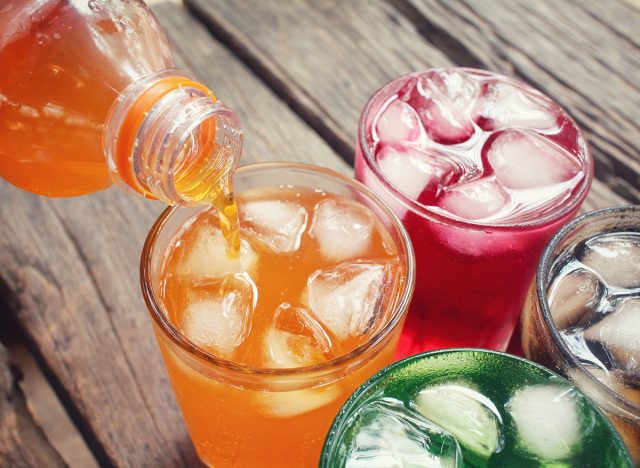
Sugary beverages should be avoided completely. "Sugar-sweetened beverages include sodas, fruit drinks, sports, and energy drinks, and they are the largest source of added sugar in the North American diet," Vasanti Malik, ScD, tells the University of Toronto. They're usually made with table sugar, high-fructose corn syrup, or other sweeteners that provide calories and are digested rapidly, more so than sugar consumed as a solid. Insulin spikes from the glycemic response can result in an appetite cascade and over-eating, as can excess insulin in the blood over longer periods."
Eat More Protein and Fiber
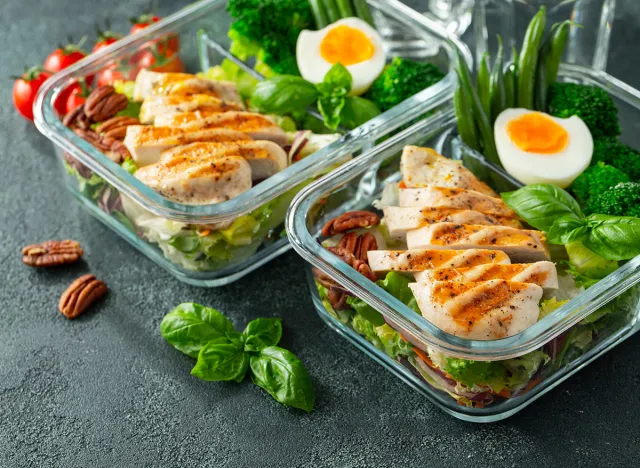
Protein and fiber encourage satiety and weight loss. "You can increase your protein intake with poultry, lean cuts of red meat/pork, dairy products, and/or beans," Kopp says. "To increase your fiber content, which is good for your digestive system and will help you feel fuller, add non-starchy vegetables and/or a small salad to lunch or dinner, or both."
Go to Bed

Experts say that sleep is essential for weight loss and fat burning. Lack of sleep can undermine your weight loss in a myriad of ways. "No one can make mindful food choices when they're tired," Dr. Albers says. "Even missing an hour of sleep can increase your appetite because your body craves that energy and food is fuel for your body. You need a clear, focused head to make healthier food choices."
RELATED: I'm a Doctor, and These Are 5 Things I Will Never Do to Lose Weight
Manage Your Stress

Stress can make weight loss incredibly difficult. Try meditation or a gentle workout to blow off some steam. "Many people have lost weight simply by reducing their stress levels and finding ways to soothe themselves without food," Dr. Albers says. "If someone's stress level is high, stress management techniques are key and a necessary first step before they change anything in their diet."
Try Intermittent Fasting
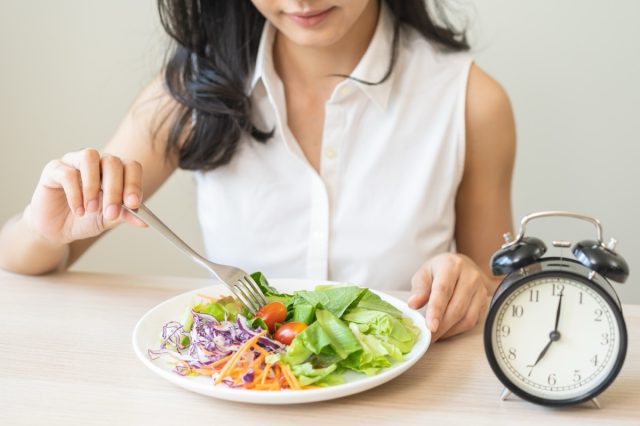
Intermittent fasting can be a useful tool for losing weight, as you force your body to burn fat. This means no snacking outside of your eating window. "Intermittent fasting contrasts with the normal eating pattern for most Americans, who eat throughout their waking hours," neuroscientist Mark Mattson tells Johns Hopkins Health. "If someone is eating three meals a day, plus snacks, and they're not exercising, then every time they eat, they're running on those calories and not burning their fat stores."
Be Active Throughout the Day
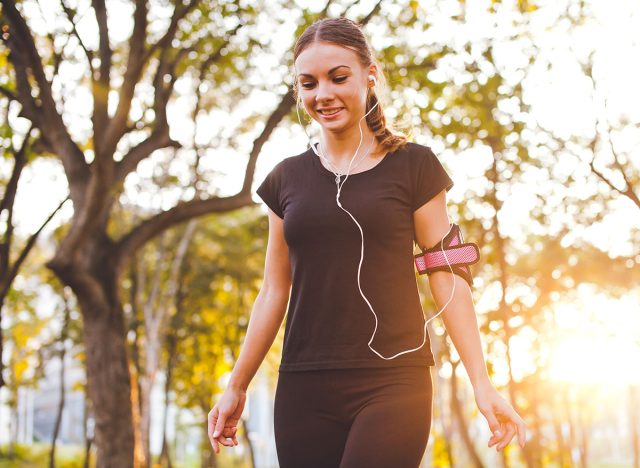
Working out is great, but make an effort to avoid sitting all day long. The more you move, the more calories you burn. "Being active is vital to losing weight and keeping it off. When active, the body uses more energy in the form of calories," says the Mayo Clinic. "And burning more calories than you take in leads to weight loss."
RELATED: I Lost 124 Pounds in 9 Months After Stopping Starving Myself and Making These Key Changes
Count your Calories

Weight loss really comes down to one thing—you need to burn off more than you take in. Even with exercise, keep track of the calories in your food to ensure you're in a deficit. "There's no easy way to lose weight," says the Mayo Clinic. "To take in fewer calories than you burn, the 2020-2025 Dietary Guidelines for Americans recommends cutting 500 to 750 calories a day to lose 1 to 1.5 pounds (0.5 to 0.7 kilograms) a week. Add more physical activity to get to your weight-loss goals faster and maintain your weight loss." And if you enjoyed this article, take advantage of these 15 Quick Ways to Lose Body Fat Percentage in a Week.




